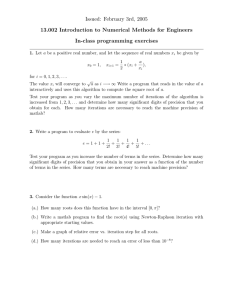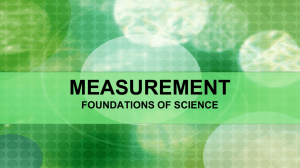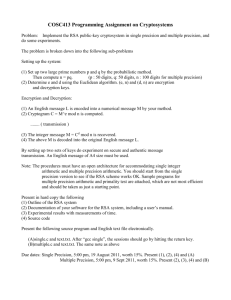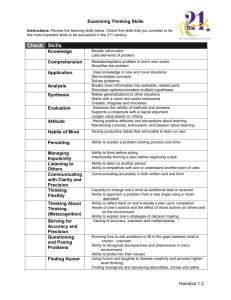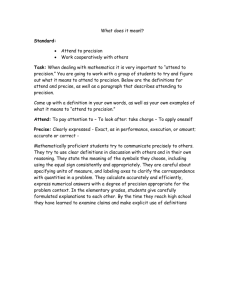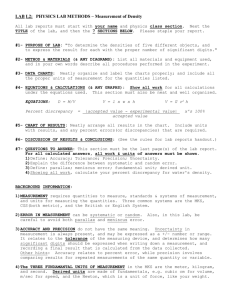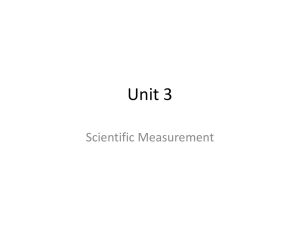Notes – Section 1
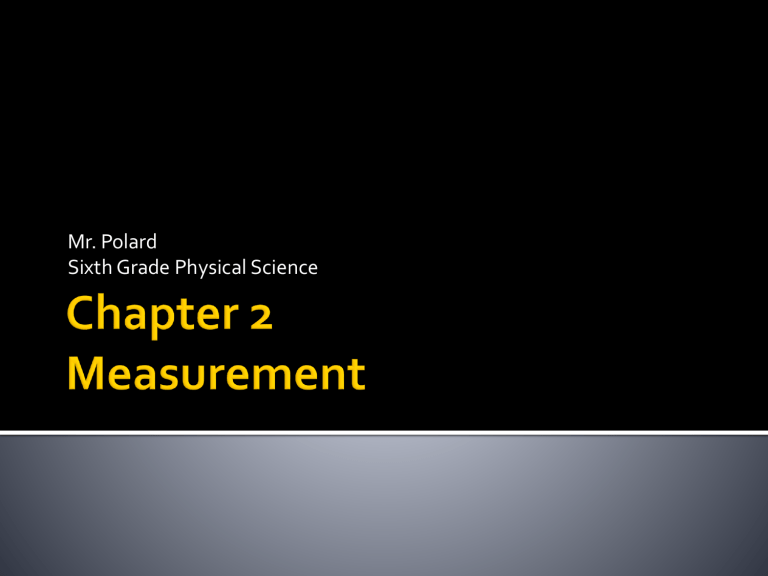
Mr. Polard
Sixth Grade Physical Science
Measurement: Way to describe objects and events with numbers; for example length, volume, mass, weight, and temperature
(pg 42)
Estimation: Method of making an educated guess at a measurement; using the size of something familiar to guess the size of a new object (pg 43)
Precision: Describes how closely measurements are to each other and how carefully measurements were made (pg 44)
Accuracy: Compares a measurement to the true value (pg 45)
A. Measurement - describes world using numbers
1. Types of measurement – distance, time, speed, volume, mass
2. Measurement can also help describe events .
B. Approximated measurement based on previous experience is estimation .
1. Estimation is useful when actual measurements are not easily made.
2. Estimation can check that an answer is reasonable
3. When you estimate, you often use the word about
C. Precision and accuracy
1. Precision – a description of how close measurements are to each other a. Used to discuss number of decimal places a measuring device can measure b. Degrees of Precision – today’s measuring devices are more precise.
2. Accuracy – comparison of measurement to actual value
3. Precision and Accuracy are important in many medical procedures.
4. Measurements can be rounded when precision is not needed
5. Significant digits – reflect true precision of calculation a. Multiplication or division – measurement with the fewest digits determines the number of significant digits.
b. Addition or subtraction – significance determined to the place value of the least precise measurement
SI: International Systems of Units, related by multiples of ten, designed to provide a worldwide standard of physical measurement (pg 50)
Meter: SI unit for Length (pg 51)
Volume: The amount of space an object occupies (pg 52)
Mass: Amount of matter in an object (pg 53,
293)
Kilogram: SI unit for mass (pg 53)
Weight: A measurement of force that depends on gravity; measured in Newton's
(pg 53, 317)
Kelvin: SI unit for temperature (pg 54)
Rate: A ratio of two different kinds of measurement; the amount of change of one measurement in a given amount of time (pg
54)
A. The International System – SI units, in multiples of ten , provide a standard of consistent measurement for global science, business, and industry.
B. Length – the distance between two points; SI unit Meter
1. Measure pencil – use centimeters
2. Measure distance from New York to Chicago – use kilometers
C. Volume - amount of space an object takes up; SI units – liter (cubic meters)
1. To find volume of regular shape – measure length, width, and height and multiply
2. To find volume of irregular shape – volume by immersion
D. Mass – amount of matter in an object; SI unit
kilogram
E. Weight – measurement of force; SI unit newton
F. Temperature – measure of kinetic energy in particles of matter; SI unit Kelvin
G. Time – interval between two events; SI units second
H. Rate – amount of change of one measurement in a given amount of time
Table: Presents information in rows and columns, making it easier to understand (pg
57)
Graph: Used to collect, organize, and summarize data in a visual way, making it easy to use and understand (pg 57)
Line Graph: A type of graph used to show the relationship between variables that are numbers on an X-axis and Y-axis (pg 57)
Bar Graph: A type of graph that uses bars of varying sizes to show the relationship among variables (pg 58)
Circle Graph: A type of graph that shows the parts of a whole; sometimes called a pie graph, each piece of which represents a percentage of the total (pg 58)
A. Scientific Illustrations – often make information more clear than written text can
1. Drawings – can emphasize only necessary details or show things you can’t see
2. Photographs – show an object exactly as it is at a single moment
B. Tables – display information in rows and columns for easier comprehension
C. Graphs – collect, organize, and summarize data visually
1. Line Graph – shows relationship between two variables, which must be
2. Bar Graph – uses bars of different sizes to show relationships between variables; one variable is divided into parts; the other variable is a number
3. Circle Graph – shows parts of a whole as percentages
4. Scales on graphs must be carefully constructed and analyzed so users easily understand the information



